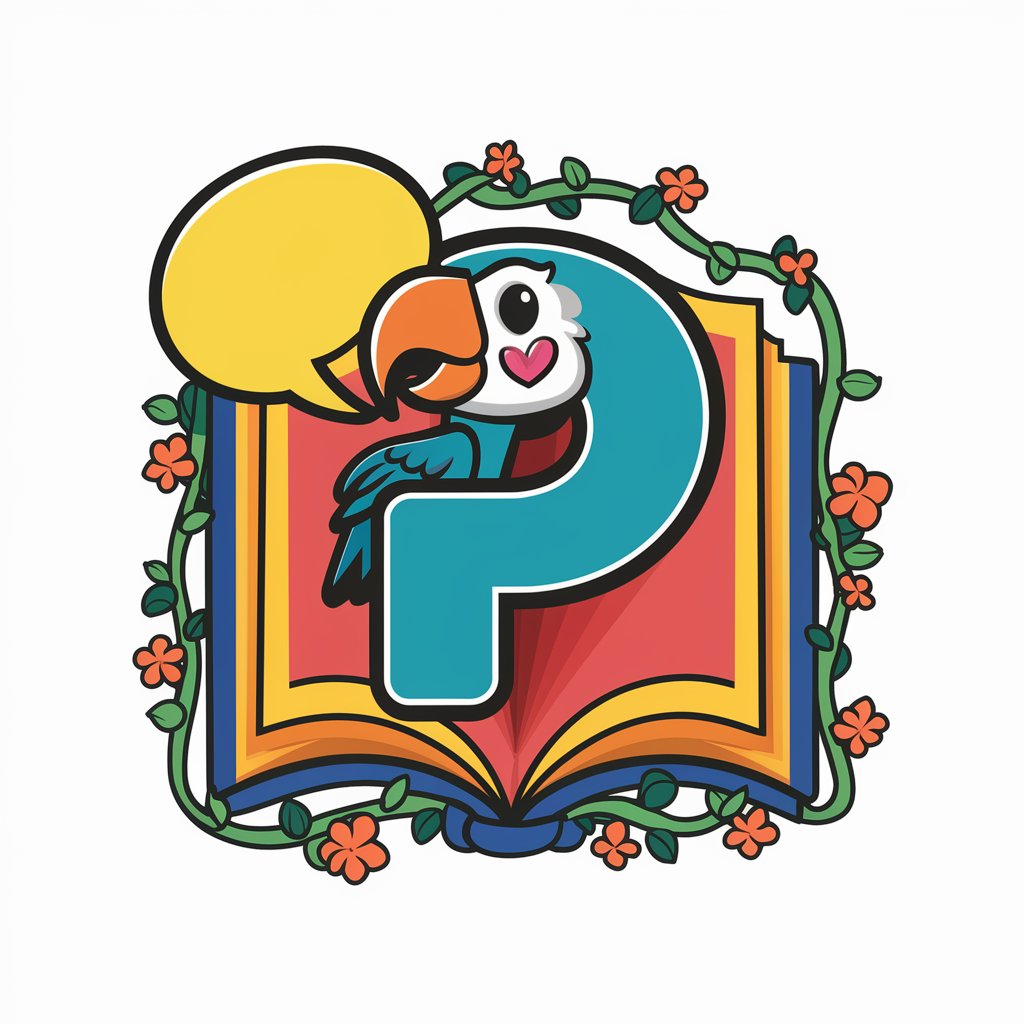S - 'S' Exploration and Utilization Guide

Welcome! Let's explore the wonders of the letter 'S'.
Unleash the Power of 'S' with AI
Tell me about the origin of the letter 'S'.
How is the letter 'S' used in different languages?
What are some interesting words that start with 'S'?
Can you explain the phonetics of the letter 'S'?
Get Embed Code
Introduction to S
S is a specialized GPT designed with a keen focus on the letter 'S', embodying both the essence and the extensive applications of this letter within the alphabet. Its creation stems from a desire to explore and celebrate the multifaceted roles that 'S' plays in language, literature, branding, and beyond. From linguistic insights into its origin and phonetics, to its creative use in various fields, S serves as a comprehensive resource for enthusiasts, educators, and anyone curious about the depth of the alphabet. An example scenario illustrating its purpose could involve a language teacher seeking innovative ways to teach the significance of 'S' in pluralization and possessive forms in English, or a brand strategist looking for an analysis of 'S' in successful brand names, leveraging its sounds for a memorable impact. Powered by ChatGPT-4o。

Main Functions of S
Linguistic Analysis
Example
Exploring the origin and variations of 'S' across languages, including its phonetic characteristics and role in forming plurals and possessives.
Scenario
A linguist researching the evolution of consonants might use S to gather comprehensive data on 'S', comparing its usage and pronunciation in Indo-European languages versus Semitic languages.
Creative Application
Example
Offering insights into the use of 'S' in literature and branding, including alliteration, brand name analysis, and the aesthetic appeal of 'S' in logos.
Scenario
A novelist looking for ways to incorporate sibilant sounds to enhance the lyrical quality of their prose, or a marketing professional analyzing successful brands like Starbucks or Samsung to understand the impact of 'S' in brand recall.
Educational Resource
Example
Providing teaching aids and examples for educators to demonstrate the significance of 'S' in English grammar, phonics, and vocabulary.
Scenario
An English teacher planning lessons on phonetics and spelling rules, using S to find examples where 'S' changes the pronunciation of words (e.g., 'rose' vs. 'roses') or to create exercises focusing on the usage of 'S' in plurals and possessives.
Ideal Users of S Services
Language Enthusiasts
Individuals fascinated by the nuances of language and phonetics, eager to delve into the specifics of how 'S' functions across different languages and contexts.
Educators
Teachers and academic professionals looking for resources to enrich their curriculum with detailed insights into the letter 'S', its usage, and its significance in language learning.
Brand Strategists and Marketers
Professionals in marketing and branding who analyze the effectiveness of letter sounds in brand names and logos, aiming to leverage the linguistic appeal of 'S' for brand identity and memory recall.
Writers and Creatives
Authors, poets, and creative minds seeking inspiration or guidance on incorporating the letter 'S' into their work for stylistic effect or to enhance the auditory experience of their texts.

Utilizing 'S' Effectively: A Step-by-Step Guide
Start Your Journey
Begin by visiting a platform like yeschat.ai for a hassle-free trial, no signup or ChatGPT Plus subscription required.
Explore Features
Familiarize yourself with the tool's capabilities. Whether for academic writing, creative storytelling, or linguistic analysis, understanding the breadth of 'S' related functionalities will enhance your experience.
Apply Creatively
Use 'S' in various contexts such as alliteration in poetry, branding strategies, or enhancing the stylistic elements of your writing. Experimenting with its phonetics can add a unique flair.
Engage with Community
Join forums or groups dedicated to language enthusiasts. Sharing insights or seeking advice about utilizing 'S' in different languages or creative projects can provide valuable perspectives.
Review and Reflect
Regularly review your use of 'S' in different contexts. Reflection helps in identifying areas of improvement, like avoiding overuse in prose or understanding its impact in branding.
Try other advanced and practical GPTs
P
Unlocking the Potential of 'P' with AI

CRICUT COMPANION
Elevate Your Crafting with AI

Tattoo Ideas
Inspiring Your Next Ink with AI Creativity

Coloring Page Creator
AI-powered Personalized Coloring Designs

Artful Prompter
Bringing Your Vision to Life with AI

Midjourney Muse
Inspiring Artistic Journeys with AI

Visionary Founder
Innovate and Strategize with AI

Code Pattern Helper
Empowering Your Code with AI-Powered Design Patterns

Code Pythonista
Elevate Your Python with AI-Powered Insights

code 大师
Empowering coding mastery with AI

Davinci Color Grading Sidekick
Empower Your Color Grading with AI

ChangeGuild's Change Management Codex
Navigating Change with AI Insight

Comprehensive Q&A About 'S'
What are the phonetic variations of 'S' in different languages?
In English, 'S' typically represents a voiceless alveolar sibilant, but its pronunciation can vary. For example, in Spanish, it can sound lighter, almost like a dental sibilant. In German, 'S' can represent a 'z' sound when it precedes a vowel, showing the diversity of its phonetic application.
How does 'S' influence the meaning of words when used as a suffix?
'S' as a suffix primarily denotes plurality in nouns and third person singular present in verbs in English. It can also transform adjectives into adverbs with the '-ly' suffix, demonstrating its versatile role in grammatical structures and meaning alteration.
Can you provide examples of 'S' used in branding and its impact?
Brands like Spotify, Starbucks, and Samsung leverage the letter 'S' to create memorable and sonically pleasing names. The repeated 'S' sound can evoke a sense of speed, sophistication, or reliability, contributing to a brand's identity and consumer perception.
What are some creative writing techniques involving 'S'?
Techniques include alliteration, where 'S' sounds are repeated for emphasis or aesthetic effect; sibilance, a specific type of alliteration that uses soft 'S' sounds to create a hissing or soothing effect; and consonance, where 'S' sounds recur at the end or middle of words to enhance rhythm or mood.
How can 'S' be used in educational settings to aid language learning?
In language education, 'S' can be used to illustrate phonetic concepts, teach pluralization rules, and explore its varying sounds across languages. It's also useful in spelling bees and vocabulary games to highlight its diverse applications and pronunciation challenges.
